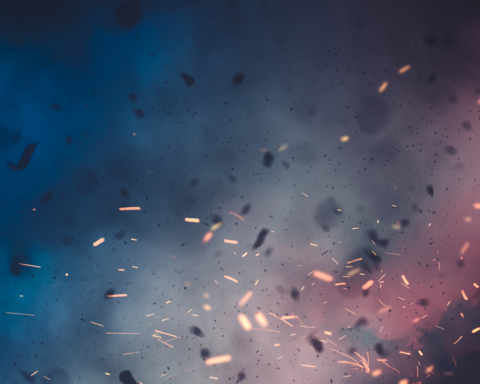May 3, 2014

Photo Credit: Ray Roberts
Editor’s Note: The following blog is one if the entries in the daily blog from the Presbyterian Peacemaking Program’s Mosaic of Peace Conference to Israel/Palestine in April/May of 2014. Read the other featured blog in Unbound here, and click here to read more from the blog!
While no day has been a monolith, it does seem like distinct themes that have emerged from each day. Thursday we heard from Jews in Jerusalem, Friday from Christians, and today, Saturday, we heard the voices of Palestinians.
I say Palestinians, not Muslims, because many of the Palestinian voices we heard from today were Christians. Come to think of it, some of the voices were Jewish as well – but all of it pointed toward the reality of what it looks like for ordinary people to live in Palestine under Israeli occupation.
Our morning began with a tour of the Silwan Valley in East Jerusalem, a Palestinian neighborhood where a few Israeli settlements have been built and where archaeologists are digging, hoping to uncover the remains of King David’s fortress on Mount Zion. The area has been re-purposed by the state of Israel as something of a National Park, called the “City of David.”
___________________________________________
The Palestinians currently inhabiting this land are often forcibly evicted and their homes destroyed. As our guides put it, the people of Silwan often say that their land has been occupied twice: once in 1967 when the State of Israel came in, and once in 1991, when the authorities of the “City of David” historical site officially took over the area.
___________________________________________
Our tour guides, two Israeli Jews, showed us some large stone structures underground and explained a bit of the archaeological history: archaeologists have been hard at work in the area since the 1830s and have found many layers of civilization, including layers from the thirteenth century BCE and the eighth century BCE. However, they haven’t been able to find what they’re looking for: a layer of civilization dating to the 10th century BCE when, according to Biblical chronology, David and Solomon ruled over Jerusalem.

Photo Credit: Erin Dunigan
In a somewhat humorous way, our guides explained to us that while these archaeologists are committed to their scientific discipline, they are also committed to their funders – in this case, conservative Israeli organizations who have a stake in finding evidence that King David was present in this city, as the Bible says. After all, they explained, a literal interpretation of Biblical history is at the heart of the Zionist Movement and the idea that a Jewish homeland must be established in Zion itself – and not Argentina, Ethiopia, or any of the other places initially suggested when Theodore Herzl established the term.
Meanwhile, these archaeologists are digging in the Palestinian neighborhood of Silwan, one of the poorest and densest neighborhoods in Jerusalem. Since the Six Day War in 1967, the State of Israel has occupied this Palestinian territory. Palestinians residents are not allowed to build any new homes or buildings, even much-needed new schools to accommodate the overflow of thousands of children. Our guides explained how through a complicated process involving exploitation of absentee property law and somewhat underhanded financial transactions between the State of Israel and the Jewish National Fund, some of the land has been bought right out from under these Palestinians in order to construct “settlements,” where Jews from any nation are invited to move and “settle” in the homeland. The Palestinians currently inhabiting this land are often forcibly evicted and their homes destroyed. As our guides put it, the people of Silwan often say that their land has been occupied twice: once in 1967 when the State of Israel came in, and once in 1991, when the authorities of the “City of David” historical site officially took over the area.
___________________________________________
One of our groups heard stories of children as young as twelve put in prison because they were throwing stones. The other group heard a father tell the story of how he was shot twice defending his children from settlers who were beating his children.
___________________________________________
After touring the area, we went to a local community center and heard stories about life under occupation from Palestinian Muslim leaders in the community. They began by reminding us that King David is an important religious figure and a prophet in Islam – their issue, he said, is not with the attempt to uncover the City of David itself but in the way his people are being treated in their own neighborhood. They shared heartbreaking stories of neighbors being forcibly evicted from their homes in the name of archaeological excavation and of violence they’d experienced at the hands of settlers. Their Palestinian Cultural Center was demolished by Israeli forces in 2012 with the explanation from those demolishing it that it was “garbage.” One of our groups heard stories of children as young as twelve put in prison because they were throwing stones. The other group heard a father tell the story of how he was shot twice defending his children from settlers who were beating his children.

Photo Credit: Abby Mohaupt
The fact of the matter, the community leaders told us, is that the kids are throwing stones, but this is in large part because of the culture of violence in which they’re being raised and the fact that so many of the are denied the opportunity to go to school. The Madaa Silwan Community Center (www.madaasilwan.org, or look for Madaasilwan on Facebook) works to redirect that energy into creative outlets like music, art, and theater, using them as therapy for children and youth. The Center also has a social worker on duty and makes a point to follow up on all child arrests, advocating for the children’s rights in the midst of arrest, interrogation, and imprisonment. It is also home to the only library in East Jerusalem where these children can borrow books. This tour was a deeply emotional one for many in our group, moving several of us to tears.
We stopped for lunch at Tantur Ecumenical Institute, an ecumenical Christian center founded during Vatican II. From the rooftop plaza of the building, we could see Israeli settlements, the Palestinian city of Bethlehem, and, for the first time, the dividing wall with checkpoints between Israel and Palestine. Our mission co-workers explained to us that the wall does not exactly follow the “Green Line” – the name for the line between Israeli and Palestinian territory – and where we were standing, there is almost a kilometer of official Palestinian territory that is inaccessible from the West Bank (including Bethlehem) without passing through a checkpoint in the wall. Looking over from that rooftop plaza, we could easily see part of the problem; the wall separates the city of Bethlehem from olive orchards that belong to the residents of the city. We learned that they can only come and work in their orchards, their source of income, if they have the right permit, which is difficult to obtain, and if someone at the checkpoint is willing to let them through.
___________________________________________
Looking over from that rooftop plaza, we could easily see part of the problem; the wall separates the city of Bethlehem from olive orchards that belong to the residents of the city.
___________________________________________
After lunch we checked in at our hotel in Bethlehem and visited the Church of the Nativity, the cathedral built over the site where Jesus is believed to have been born. After that tour, we walked to the International Center of Bethlehem, home of the Diyar Consortium, a cultural center in Bethlehem that focuses particularly on providing programs and avenues of cultural expression for children, youth, women, and the elderly. Rev. Dr. Mitri Raheb, pastor of Christmas Lutheran Church and president of the Diyar Consortium, welcomed us warmly and told us that this center focused on culture because, in his words, Israel/Palestine has too much politics, too much religion (though, he commented, not enough faith), but not enough culture, which he called the soul of society. He thanked us for the PC(USA)’s involvement with and support of the center for over 20 years. Tom Taylor, President of the Presbyterian Foundation, also addressed us at the IBC and talked about how it was one of the three organizations in which the Foundation was planning to begin the 220th General Assembly’s mandate for positive investment in Palestine.

Photo Credit: Erin Dunigan
We received greetings from Tony Marcos, the General Director of the Municipality of Bethlehem, on behalf of the mayor and told us a little about the demographics, history, and current situation of the city. A particularly interesting fact: while Bethlehem is 60% Muslim and 40% Christian – therefore a majority Muslim city – it always has a Christian mayor and deputy mayor by decree of past Muslim presidents in order to maintain the Christian character of the historically Christian city. He told us about the struggles of the economy in the city, especially since the wall went up, as Bethlehem’s largest industry is tourism, which has been restricted. He said it is no secret that the biggest obstacle to peace in Israel/Palestine is the Israeli occupation, and he asked us to urge our government, as the largest investor in the peace talks to do all it can to end that occupation.
We ate dinner at the ICB. Many of us went out on the balcony after dinner to overlook the city and had the fascinating interreligious experience of hearing the Muslim call to prayer from the mosque next door and the church bells from Christmas Lutheran Church at the same time.
___________________________________________
We went out on the balcony after dinner to overlook the city and had the fascinating interreligious experience of hearing the Muslim call to prayer from the mosque next door and the church bells from Christmas Lutheran Church at the same time.
___________________________________________
After dinner, we had the incredible privilege of seeing the Diyar Consortium Dance Theatre preform “Out of Place.” The performance was a deeply moving mixed media production that included dance, acting, poetry, music, and the creative use of a handheld camera to tell the story of those suffering under occupation. It told the same story that we heard in our tour of Silwan Valley but through different creative media. In many ways, it seems, our day ended in much the same way as it began.
*****
AUTHOR BIO: Rev. Ginna Bairby is the Managing Editor of Unbound and was honored to serve as the official blogger for the Mosaic of Peace Conference in Israel/Palestine, keeping those back home informed of what the group was learning and experiencing each day. To read other entries from Ginna’s Mosaic of Peace Blog, click here.
Click here to read the items of business concerning the Middle East coming before the General Assembly this summer.
Read more articles from The Road to Detroit: Issues of Social Justice Before the 221st General Assembly!





Unbound Social